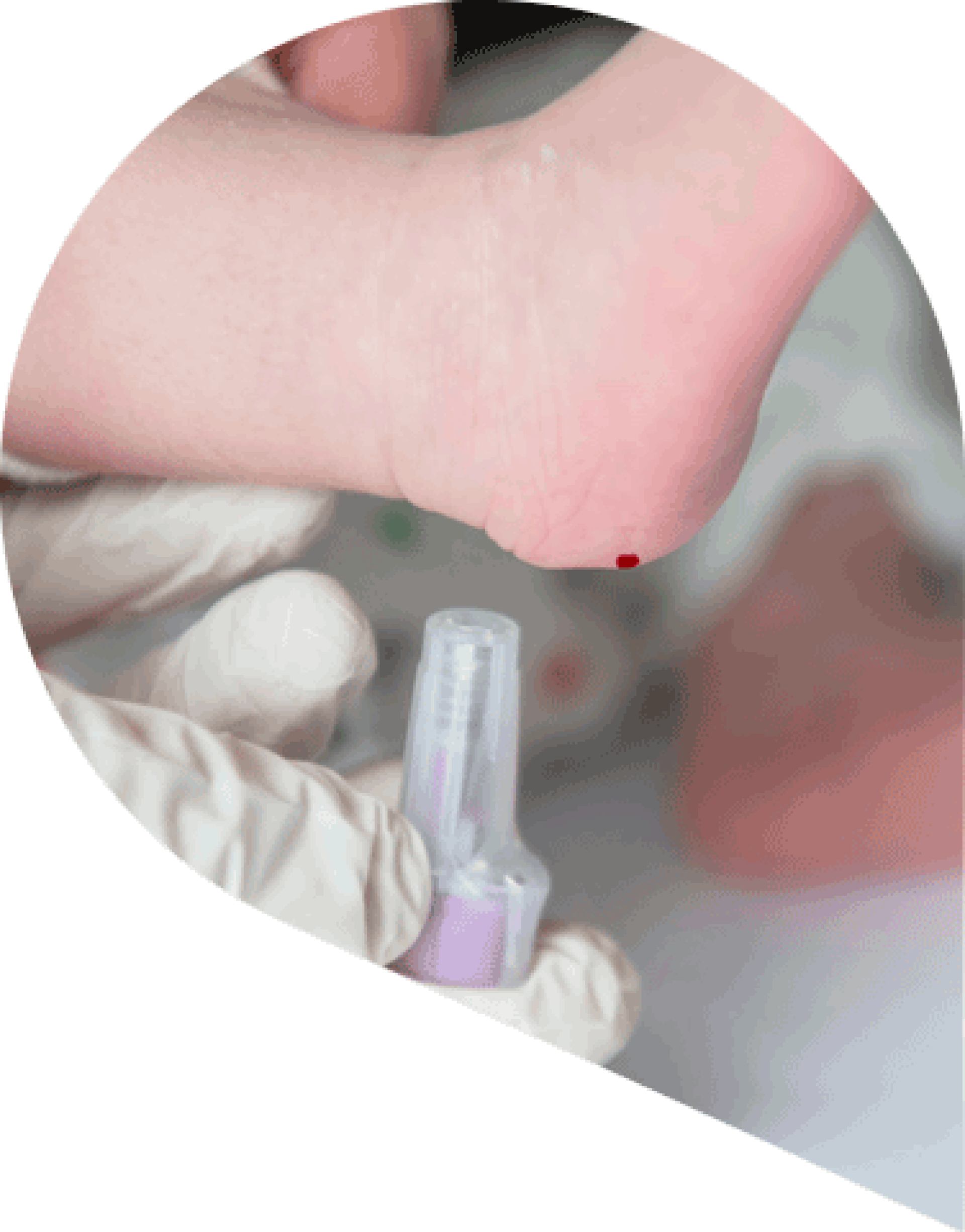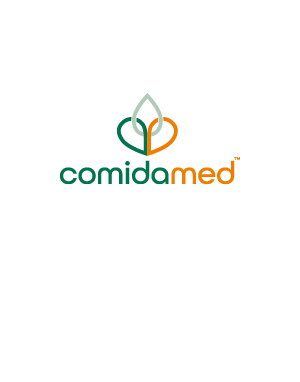Organic Acidaemias (MMA/PA)
The following information provides a general overview of Organic acidaemias and is intended for educational purposes only. It should not replace guidance from qualified healthcare professionals. Vitaflo™ International Limited accepts no responsibility for any loss resulting from reliance on the content. For comprehensive and up-to-date recommendations, please refer to national and international clinical guidelines.
What are organic acidaemias?
Organic acidaemias are types of inborn errors of protein metabolism and are also known as organic acidurias. The following information focuses on methylmalonic acidaemia (MMA/methylmalonic aciduria) and propionic acidaemia (PA/ propionic aciduria) only.
These disorders are inherited, autosomal and recessive disorders.
MMA and PA occur due to a defect in the enzymes responsible for the final stages of the breakdown of four essential amino acids:
- Isoleucine
- Valine
- Threonine
- Methionine
What are the causes of Methylmalonic Acidaemia and Propionic Acidaemia?
The organic acidaemias (methylmalonic acidaemia (MMA) and propionic acidaemia (PA)) both share a common biochemical and clinical pathway, so are often grouped together.
Both disorders are disorders of propionate metabolism leading to a build-up of methylmalonic acid and propionyl-CoA, and other toxic metabolites1.
There is a deficiency of the enzyme, propionyl-CoA carboxylase, which is dependent on biotin, one of the B vitamins.
The deficient enzyme is methylmalonyl-CoA mutase. It is dependent on vitamin B12.
Propionyl-CoA buildup is a result of the breakdown of certain amino acids (isoleucine, valine, threonine and methionine), but also due to the breakdown of odd-chain fats and from gut bacteria.
*Note: you may find our Organic Acidaemia: Methylmalonic Acidaemia (MMA) condition-specific resource helpful. This is intended for use with patients and families to explain the complex science behind the inheritance of MMA, diagnosis and management.
The same information can also be found on the patient pages in this site.
For further information on resources available, please enquire: Contact page
Testing for Methylmalonic Acidaemia and Propionic Acidaemia: newborn screening

Newborn screening (NBS) for inborn errors of metabolism involves a heel-prick blood test performed by a healthcare professional a few days after birth.
However, NBS for Methylmalonic acidaemia (MMA) and Propionic acidaemia (PA) is limited to just a few countries, including the USA, Australia, Spain, Italy and Austria2-3.
In countries with no NBS, diagnosis is usually through symptoms.
Once symptoms are present, various urine and blood tests and/or genetic analyses can be performed to confirm the organic acidaemia diagnosis.
How common are Methylmalonic Acidaemias and Propionic Acidaemias?
The worldwide prevalence of methylmalonic acidaemia (MMA) is approximately 1 in 50,0004.
Whereas the worldwide incidence of propionic acidaemia (PA) is 1 in 100,000 – 150,0004. Although some populations have a higher incidence of propionic acidaemia, with 1 in 2000–5000 reported in Saudi Arabia4.
What are the symptoms of Methylmalonic Acidaemia and Propionic Acidaemia?
Although both disorders are present at birth, symptoms can first appear at any age, depending upon the residual enzyme activity.
Individuals usually present within the neonatal period (first 4 weeks of life) - this is the case 48% of the time for methylmalonic acidaemia (MMA) patients, and 65% for propionic acidaemia (PA) patients5.
However, sometimes symptoms may not appear for months or even years.
Early onset symptoms may include1:
- Metabolic crisis
- Poor feeding
- Vomiting (with ketoacidosis)
- Dehydration
- Lethargy
- Hypo or hypertonia (low or high muscle tone)
- Death
Late onset in infancy or as an adult, symptoms may be less severe and can include1,6:
- Failure to thrive
- Developmental delay
- Movement disorder
- Recurrent vomiting
- Acute metabolic decompensation
Common clinical features occur as a result of the build-up of propionyl‐CoA and other metabolites to toxic levels:
- Mental and motor developmental delay
- Poor growth
- Immune dysfunction
- Pancreatitis
- Cardiomyopathy (mainly in propionic acidaemia)
- Chronic kidney disease (methylmalonic acidaemia)
Newly diagnosed patients can be very ill on diagnosis and may require admission to intensive care due to severe metabolic acidosis.
What is the likely clinical outcome for Methylmalonic Acidaemia and Propionic Acidaemia if diagnosed early/effectively managed?
The clinical outcome of these disorders differs widely, with high morbidity and mortality1.
Survival rates have improved over the past decade, but early deaths still occur.
An early onset of symptoms is associated with poorer outcomes.
Individuals with methylmalonic acidaemia (MA) who respond well to vitamin B12 supplementation have the best outcome; however, they are still at risk of chronic kidney disease1 (see management for more details).
How are Methylmalonic Acidaemias and Propionic Acidaemias managed?
The main components of management are medical and dietary.
Biochemical monitoring and follow-up care are also essential parts of all components of Organic acidaemia management.
What does medical management involve?
Medical management components include pharmacotherapy and transplantation1,7-8.
Pharmacotherapy
Some (or all) of the following medications will be used depending on the individual and local metabolic centre practice1,7-8:
Assists with toxin removal from the body.
Used to suppress gut production of propionate.
Co-factor for methylmalonyl-CoA mutase, given routinely if responsive.
Used to correct acidosis in MMA.
Used as a treatment for hyperammonaemia.
For example, chronic kidney disease and cardiomyopathy.
When is transplantation used?
Transplantation should be considered when an individual’s condition is difficult to stabilise, and life-threatening metabolic decompensation is happening repeatedly.
Transplants are associated with significant risks and need to be managed peri and post-operatively to avoid catabolism and possible metabolic decompensation.
Transplants are not a cure but can help medically stabilise patients.
Often, the need for dietary management continues after transplantation. However, improvement in quality of life has been shown as a result in some cases.
Transplantation options to consider in methylmalonic acidaemia (MMA) include liver and/or kidney.
For propionic acidaemia (PA), a liver transplant is an option.
What does dietary management involve?
Dietary management should be supported by the local metabolic team, including a dietitian.
The dietary management aims for normal growth (as appropriate) and metabolic stability, achieved by1,5,9:
Isoleucine, valine, threonine and methionine.
This is typically limited to the safe levels4
- These may be prescribed if an individual’s intake of dietary protein is considered inadequate either in quantity, quality or both.
- To provide all the amino acids found in regular dietary protein but none, or a reduced amount, of the four ‘problem-precursor’ amino acids.
- However, prescription varies from country to country and centre to centre.
Essential to meet requirements and prevent catabolism.
To prevent catabolism.
During periods of illness/episodes of vomiting, emergency regimens (ER) can be put in place to promote anabolism and prevent catabolism. ER are tailored to the individual and advised/supported by the healthcare metabolic team.
How are Methylmalonic Acidaemias and Propionic Acidaemias managed in infants?
Management of Methylmalonic Acidaemias (MMA) and Propionic Acidaemias (PA) can vary from country to country.
The severity of the disorder can also influence management. Severe cases may present very early after birth, whereas milder cases tend to present later10.
Dietary management
Newly diagnosed infants may be very unwell, requiring emergency management in the intensive care unit. Immediate management and appropriate treatment are essential to reduce mortality and morbidity, to limit the formation of propionate and prevent catabolism4,9.
The goal of dietary management is to achieve good metabolic control, meet nutritional requirements and to promote optimal growth and development. Breastfeeding offers many benefits to mothers and infants, and a family should be supported in making the appropriate choice for their family, if deemed appropriate by the metabolic healthcare team.
Following diagnosis and metabolic stabilisation, the infant with MMA or PA is to reintroduce protein into the diet4. This can be in the form of breast milk or standard infant formula, often in combination with a specialist formula (such as comida-OAc A formula) which is free from methionine, threonine and valine.
comida-OAc A formula has the same nutritional profile as standard infant formula, but the ‘protein’ is provided as individual amino acids, yet low in isoleucine and free from methionine, threonine and valine.
- Forny P, Hörster F, Ballhausen D, Chakrapani A, Chapman KA, Dionisi-Vici C, et al. Guidelines for the diagnosis and management of methylmalonic acidaemia and propionic acidaemia: first revision. J Inherit Metab Dis. 2021;44:566–92. https://doi.org/10.1002/jimd.12370
- Loeber JG, Platis D, Zetterström RH, Almashanu S, Boemer F, Bonham JR, et al. Neonatal screening in Europe revisited: an ISNS perspective on the current state and developments since 2010. Int J Neonatal Screen. 2021;7:15. https://doi.org/10.3390/ijns7010015
- Health Resources & Services Administration. Recommended Uniform Screening Panel [Internet]. Available from: https://www.hrsa.gov/advisory-committees/heritable-disorders/rusp [cited 2024 Aug 1].
- Baumgartner MR, Hörster F, Dionisi-Vici C, Haliloglu G, Karall D, Chapman KA, et al. Proposed guidelines for the diagnosis and management of methylmalonic and propionic acidemia. Orphanet J Rare Dis. 2014;9:130. https://doi.org/10.1186/s13023-014-0130-8
- Dixon M, MacDonald A, White F. Disorders of amino acid metabolism, organic acidaemias and urea cycle disorders. In: Shaw V, editor. Clinical paediatric dietetics. 5th ed. Hoboken (NJ): Wiley-Blackwell; 2020. p. 513–98.
- Galarreta CI, Shchelochkov OA, Serrano M. Propionic acidemia. 2012 Dec 13 [updated 2024]. In: Adam MP, Feldman J, Mirzaa GM, Pagon RA, Wallace SE, Bean LJ, et al., editors. GeneReviews® [Internet]. Seattle (WA): University of Washington, Seattle; 1993–2024. Available from: https://www.ncbi.nlm.nih.gov/books/NBK92946/
- Gleason CA, Sawyer TL. Inborn errors of carbohydrate, ammonia, amino acid, and organic acid metabolism. In: Martin RJ, Fanaroff AA, Walsh MC, editors. Avery’s diseases of the newborn. 11th ed. Philadelphia (PA): Elsevier; 2024.
- EIMD. Guidelines for the diagnosis and treatment of methylmalonic and propionic acidurias [Internet]. Available from: https://www.e-imd.org/files/medias/files/recommendations/MMA_PA%20guideline_Quick%20reference%20guide_201408.pdf [cited 2025 Aug 1].
- Jurecki E, Ueda K, Frazier D, Rohr F, Thompson A, Hussa C, et al. Nutrition management guideline for propionic acidemia: an evidence- and consensus-based approach. Mol Genet Metab. 2019;126:341–54. https://doi.org/10.1016/j.ymgme.2019.02.007
- Kölker S, Cazorla AG, Valayannopoulos V, Lund AM, Burlina AB, Sykut‐Cegielska J, et al. The phenotypic spectrum of organic acidurias and urea cycle disorders. Part 1: the initial presentation. J Inherit Metab Dis. 2015;38:1041–57. https://doi.org/10.1007/s10545-015-9839-3
Related products
Browse the products available for managing this condition.
Information presented on this page is intended for healthcare professional use only. Food for Special Medical Purposes to be used under medical supervision.
Date of publication: 28/05/2025


